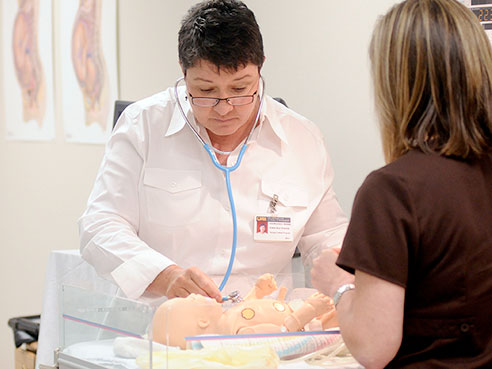 At UAB, the Center for Interprofessional Education and Simulation (CIPES) is an intersection of collaborative practice where learners from the health schools and health-related programs in arts and sciences, business and engineering learn to deliver effective and efficient patient-centered care
At UAB, the Center for Interprofessional Education and Simulation (CIPES) is an intersection of collaborative practice where learners from the health schools and health-related programs in arts and sciences, business and engineering learn to deliver effective and efficient patient-centered care
Its mission supports the Institute for Healthcare Improvement’s Triple Aim: improve the patient care experience, improve the health of a population and reduce per capita health care costs.
“Triple Aim offers the framework for interprofessional collaboration and our goal of optimal health care delivery,” said CIPES Director Robert Rich, M.D. “We expect UAB to be a leader in integrating interprofessional education and collaborative professional practice.”
UAB now is one of 18 sites in 16 states that comprise the Nexus Innovations Network of The National Center for Interprofessional Practice and Education. As part of the network, a UAB CIPES team led by principal investigators Dawn Taylor Peterson, Ph.D., and Erica Pryor, Ph.D., will begin a two-year project to measure the effect of a faculty-development course on perceptions of interprofessional collaboration and competencies in simulation debriefings.
CIPES was established in June 2015 to encompass and support the work occurring in the Office of Interprofessional Simulation for Innovative Clinical Practice (OIPS) and the Office for Interprofessional Curriculum (OIPC).
The OIPS, a joint venture between UAB health profession schools and the UAB Health System, embeds simulation-based techniques in training and curricula.
Learn more about UAB’s simulation training:Simulation accelerates learning, innovation across UAB's health enterprise |
“Simulation offers opportunities for our learners to demonstrate critical thinking, effective communication and teamwork behaviors in a low-consequence environment. Our learners have the freedom to make mistakes without instructor intervention or causing patient harm,” said OIPS Director Marjorie Lee White, M.D. “Debriefings and post-simulation reviews provide rich learning experiences. Our aim is to see one, SIM some and harm none.”
The OIPC promotes the development of inter-school curricula and collaborates with faculty to design and implement components that promote competencies in ethics, teamwork, communication, and roles and responsibilities.
“We teach students to engage and effectively communicate with professionals from multiple disciplines in order to foster delivery of the highest quality patient care across health care settings,” said OIPC Director Erica Pryor, Ph.D. “We currently are working to expand the number of interprofessional activities embedded in existing courses for undergraduate and graduate students.”
Simulation facilities on campus include the Center for Patient Safety and Advanced Medical Simulation in Quarterback Tower managed by the OIPS, the Volker Hall Simulation Sandbox managed by the OIPS, the School of Nursing Clinical Skills and Simulation Center in the Learning Resource Center, the Surgical Skills Center in the Kracke Building and the Pediatric Simulation Center at Children’s of Alabama.